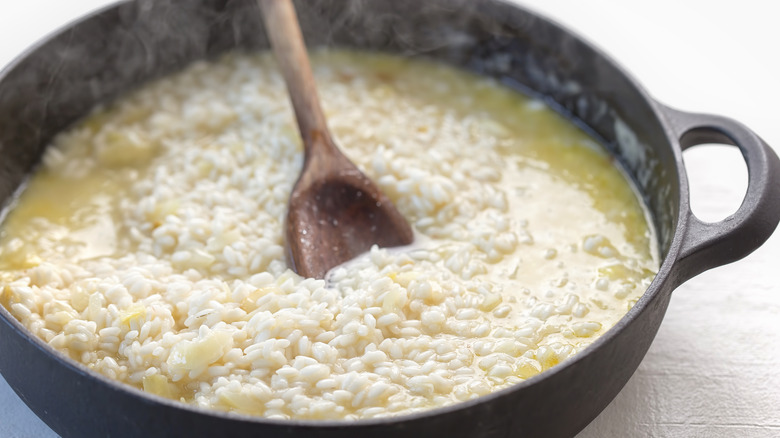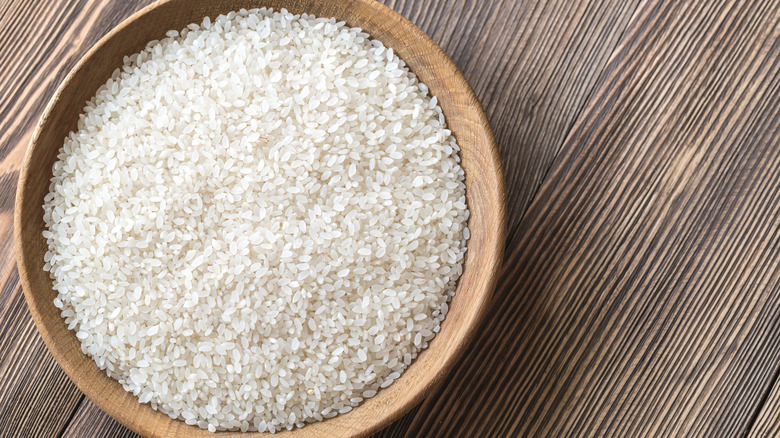The Type Of Rice You Should Never Use To Make Risotto
We may receive a commission on purchases made from links.
Ever need a break from the monotony of life? One of the best paths to peace in the kitchen can be found while whipping up a pan of risotto. It takes time to build the flavors while consistently stirring in what may seem like a never-ending supply of stock. As chef Antonio Salvatore told Food and Wine, "You need to choose the right produce, time it well, and take care at each step. You don't want to serve risotto too soft or too al dente."
The ingredients for a modern day risotto are quite simple – onion, garlic, butter or olive oil, stock, parmesan, and of course, rice, according to Cuisine at Home which outlines that this one-pot dish was born in the Italian province of Lombardy during the Spanish rule of Milan. So, if you find risotto a kissing cousin to paella, you wouldn't be wrong. Yet, the addition of stock to the traditional recipe came by way of chef Felice Luraschi in 1829, per Italy Heritage.
Regardless your ingredient list, to really get it right you have to chose the right rice. Not any old rice will do. Skip the long-grain, and instead reach for short-grain for the creamiest of creamy risotto just like Nona used to make.
Why is the type of rice so important?
"The biggest mistake in cooking risotto often takes place at the supermarket rather than the kitchen," chef Salvatore told Food and Wine. You could go for arborio, carnaroli, maratelli, vialone nano which are suitable varieties of short grain rice, according to Italy Heritage. But, Salvatore prefers carnoroli because it's hard to overcook, resulting in that creamy consistency without turning into mush.
Still, "Any short grain rice is good; short has more amylopectin," Robin Asbell author of The New Whole Grains Cookbook told Whole Grains Council, "Some of the pigmented rices are also nice, Himalayan Red is twenty minutes and beautiful, Chinese Black is almost as pretty as squid ink." Brown rice is also doable, as long as it's a short grain as Judith Finlayson, author of The Complete Whole Grains Cookbook adds, "I have had very good success making risotto with short-grain brown rice; for best results you soak it for at least three hours, preferably overnight."
The council notes that long grain rice varieties are rich in amylose producing a light and fluffy result for dishes like pilaf. But, if you're thinking, "what the heck is amylopectin?" We get it! The council's basic explanation is that it's a complex chemical found in grains which present more starch when cooked — making those short grain rice varieties the best match for risotto's creamy demands. So, grab a spoon and get to stirring those short grains for some major zen!

